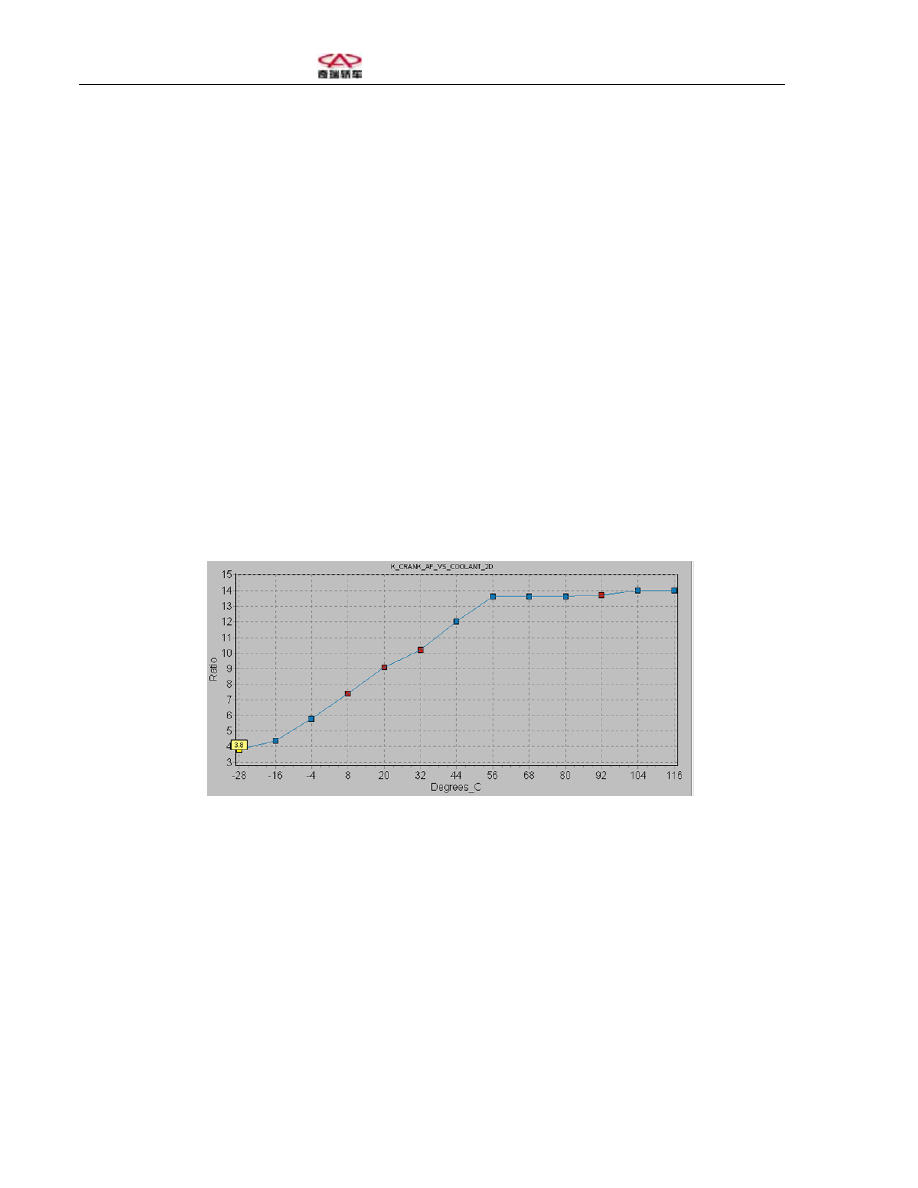Chery A15. Manual - part 249

2. Fuel supply system control logics
- Logic of fuel pump startup
The fuel pump will run for 0.5s after the ignition switch is turned on. The pump will stop if no
valid 58X signals are detected; the engine starts running; the fuel pump starts running after ECM
detects two valid 58X signals.
- Logic of fuel pump shutoff
The fuel pump will stop running after the turning speed signals have been lost for 0.8s.
Start the pre-injection
The pre-injection will only inject once during normal startup. The conditions for pre-injection
startup are as follows:
- The engine starts running (ECM detects at least 2 valid 58X signals)
- Fuel pump relay is actuated
- Fuel pump working time exceeds the delayed voltage accumulation period
- No pre-injection before
Once the above conditions are satisfied, the pre-injection will be carried out in all cylinders.
3. Engine startup performance
Engine startup performance refers to the engine startup performance at various ambient
temperatures.
Startup Temperature and Air-fuel Ratio